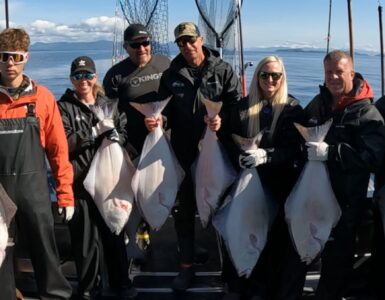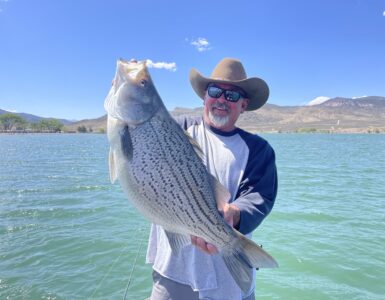(Adam) Coming up tonight on KSL Outdoors.
(troy) get ready Austin.
(troy) take them! (shots)
hunting the “rib eye in the sky” AND
the kids get first crack at the ducks in this years youth hunt.
(adam) and over 600 kids at this years youth waterfowl fair. I’m Adam Eakle and this is KSL Outdoors.
(Adam) thanks for tuning into KSL Outdoors, I’m Adam Eakle. You know September usually kicks off a lot of first upland game hunts here in the state. Once of them is the biggest bird of all, that’s right it’s the “rib eye in the sky.”
(Joel Ferry, Northern Utah Landowner) so we are going to get set up in a grain field and we are going to be hiding in the corn right next to it. There’s been about 50-75 sandhills coming into this field every morning. So we’ll get set up and they should come right into us.
Utahans have been hunting sandhill cranes since the late 80’s. This year 130 tags were issued in four counties, Box Elder, Cache, Rich and Uintah. What was once a controversial hunt has now become more accepted as a depredation hunt.
(joel Ferry) from a farming perspective they do quite a bit of damage, they’ll go in and they’ll pick the corn seed right out of the ground. So we go and plant our corn seed a couple of inches into the ground and they just know exactly where we plant and they go right behind and pick every seed. And so..
(Joel Ferry) it’s nice to be able to get good guys like this and have a good hunt, early season and try to keep the population in check.
This morning we have five crane tags, from 15 year old, first time crane hunter Austin Thompson, to 71 year old Ellis Bringhurst. Ellis’s son Jeff, has a surprise for him.
(Jeff Bringhurst) this is my grandfathers gun. I’m going to see if my dad wants to shoot with this one. 54:03 Hey, do you recognize that? (ellis Bringhurst, Jeff dad) oh that’s a 12 gauge. (jeff) that was your dads. (ellis Bringhurst jeff dad) oh Dennis gave it to you, did he really? (jeff) do you want to shoot it today? (jeff dad) sure.
(Ellis Bringhurst, Hunting with his dad’s Winchester Model 12) It was my dads favorite gun, he had about 30 guns and this is the only one he wanted passed on and kept in the family.
(Ellis Bringhurst) So good surprise this morning Adam. It means my dad is here hunting with us.
(troy Thompson) man there is a bunch of ducks.
the sky was alive with Ibis, ducks, geese..
even a few hundred pelicans. It wouldn’t be long before the sandhills would take flight. Jeff even did his crazy crane dance to lure the birds in.
(jeff acting like a crane) do it again I missed it! (jeff) oh no, I did it so the camera was pointed away.(laughs)
(Troy) there’s another flock behind them. Ok here they come.
(Troy) yeah they are going to come right over us right here.
Ellis missed his first two shots, but his son, Jeff did not.
(Troy) look at how big they are peanut, look at that.
(Blair Stringham, DWR; Migratory Game Bird Coordinator) “We have about 1500 sandhill cranes that will breed here each year. Overall we have about 20 thousand in the whole flyway. The birds we hunt here are typically the ones that have been breeding throughout the year and then we’ll get quite a few that will move through Utah as they stage and head to New Mexico where they winter.
(Joel Ferry) almost all of the sandhill hunting is going to be on private lands. And the waterfowl management areas are closed. But most farmers because the sandhills do cause damage and they are somewhat of a problem. Most farmers are willing and more than happy to have hunters go out on their property. If they are respectful, nice courteous they shouldn’t have any problem getting access to land.
(troy) whole flock, they are going to come right over us Austin. They are going to come right over us.
(Troy) don’t move, don’t move! not yet.
(Troy) get ready to stand up when I tell you.
(Troy) get ready!
(troy) take them! (shots) yeah, that a boy boys! (troy) go get them. Nice shooting woo hoo.
(Adam) that’s a big bird aren’t they? (troy) oh look at that. (austin) pretty cool. (adam) they both look mature. (troy) yeah that’s a nice pair.
(Richter Thompson) Hey guys you want to see ours? (jeff) Yeah.
(Troy) Tell him knocked over. (richter) knocked over. (laughs) (jeff) right there buddy, how’s that huh (high five)
Coming up….
More success with the kids, but first lets test your knowledge of cranes in tonights Burt Brothers quiz question.
________________________________________
***********
(Tonya Kieffer, KSL Outdoors Correspondent) Welcome back to KSL Outdoors, I’m Tonya Kieffer, and good morning from the beautiful marshes of Farmington Bay! We’re here with the Avery Outdoors Pro Staff, ready for the 4th Annual Youth Waterfowl Hunt, and I am so excited to get in the blinds with these guys. I’ve been waiting months for this, so let’s go get in the blinds, and check it out.
It’s early morning and we got to participate with some very lucky young men in the 4th Annual Avery Outdoors Youth Waterfowl Blast.
(Rob Friedel, Avery Outdoors Pro Staff, Hooper, Utah) We pick some what we think are pretty good individuals, some young kids, that we want to get interested in hunting. We take them out to Famous Dave’s the night before, have a big huge feast, give them a big swag packs. You see the kids holding power, hunter bags, and game carriers, and all this other stuff, so we get them a little outfitted. Get them a little treat, then we load up the airboats, pile the kids in, and try to go find the ducks!
(Kelton Friedel, Avery Youth Field Staff) I woke up at 3. Man I got so excited. Its like nothing else.
The anticipation was felt by all as we slid into the dark marshes, in preparation for the morning hunt, and we were given a reminder that above all, safety was first!
(Rob Friedel, Avery) Alright you guys ready? Kelton- Yep. Rob to Austin-Are you ready? Yeah.
(Kelton Friedel, Avery Youth Field Staff) But in the blind today, we need to work on muzzle control and just keep your muzzle clear of all people or anything like that or dogs or decoys. Just make sure that your muzzle is always pointed in a safe direction. Just in case.
As legal shooting time of 30 minutes before sunrise arrived, the quite sounds of the wing beats in the marsh were followed by the loud shots of success.
The group worked together, spotting ducks from all angles, as mentors guided the young men from one successful shot to the next.
(Shane Spader, Hooper, UT) With duck hunting, you get a little bit of, I guess you’d call it Duck Fever.
(Shane Spader) So I just have to keep reminding them, Hey make sure your putting your cheek down, looking down the barrel, leading them.
As our guides watched on, we were reminded of the importance of why this hunt exists.
(Chad Yamane, Avery Outdoors Flyway Manger, Syracuse, UT) This is a special hunt. It’s for youth only, 15 and under. They get to hunt today without any adults and its a pretty neat experience for them.
(Chad Yamane, Avery Outdoors Flyway Manger, Syracuse, UT) You hear guys saying that they didn’t have a youth hunt back in the day and they still love this sport. They didn’t have all the distractions that these kids have. I mean Xbox’s, Nintendos, Wii’s, all the social media, and so we’ve got to get these kids outside and involved.
Shooting ducks is fun, but we can’t forget it’s about conservation.
(Kelton Friedel) Conservation is the reason why we have limits, and you’re not able to just kill as many ducks as you want.
The UDWR has started a brand new program geared toward the conservation and habitat improvement for our feathered friends.
(Blair Stringham, UDWR Waterfowl Coordinator) It’s the Waterfowl Slam Program. What is, is an opportunity for people to go out and collect bands for harvesting different groups of waterfowl species.
(Blair Stringham, UDWR) We have adults can participate, as well as kids. We have them for mallards, coots. We also have a diver and puddler slam. So if those people harvest those birds, they can collect a pretty cool looking colored band.
(Josh Noble, Avery Outdoors Territory Manger) 17,000 ducks, small game, or duck licenses were sold last year in the state of Utah which is a catastrophe! It really is. We need to get more people out in the marsh.
(Josh Noble, Avery Outdoors Territory Manger) Overall, I understand the meaning of the youth hunt, and what the DNR’s direction is with the youth hunt and the hunter retention and hunter recruitment. Shoot, if we don’t let this kids come out, have a good time, harvest their ducks, shoot, we’re going to loose the sport faster than we’re gaining it.
(Kelton Friedel) Its just a great way to come out and spend some time with your friends and family
(Tonya Kieffer, KSL Correspondent) It’s beautiful here in the marshes of Farmington Bay. I know that I’ve already quickly become accustomed to the water and the mud. Ugh, guys how was the hunt? Kelton says “It was awesome.” “Great”. Tonya-says “What is this?”. Kelton says ” That’s a limit of dead ducks”. Tonya says That’s a limit of dead ducks. You guys did awesome. Only a couple of hours out in the marshes this morning, but you know what we’re gonna go ahead and return back to Salt Lake to Fish Tech for tonight’s fishing report.
________________________________________
************
This week we’re hiking to Dog Lake from the Butler Fork Trail in Big Cottonwood Canyon.
Michelle Butz – WMC Hike Coordinator: Butler Fork Trail is one of my favorites because it starts out a little bit steep, so you get tired pretty quickly.
Although it’s workout right off the bat, keep going because…
It flattens out after that and one of my favorite parts is the meadow when you get up top.
And it follows a creek. So It’s really pretty, really quiet, peaceful.
They say it’s the journey that’s important, not the destination. That’s especially true in Butler Fork.
After you make the turnoff toward Dog Lake there’s just a fabulous meadow that’s got tall aspens and lots of wildflowers, and almost always, we’ll run into a moose or two.
And find some moose, we did! This mother and her calf were hanging out only a few yards off the trail.
It would be a shame to live in Utah and not see the things that you see up here.
Soon after the moose sighting, we crossed into Mill Creek Canyon and down to Dog Lake. It’s popular to get here from the Mill Creek side, but Michelle thinks Butler Fork is the better way.
For me, it’s just more picturesque. There’s more wildflowers I think. I do like this approach better. One of my favorite approaches to Dog Lake. And I think there’s less people here too.
Steve Wall – Ah, it’s a great hike. Great hike. A little demanding, but good.
________________________________________







Add comment